Crop protection
2020
Spring 2020 started very wet in the first 2 months already 200 mm of rain fell. However, we were able to spray weeds and our cereals in the first weeks of 2020 with our Dammann trac.
2019
2019 was another dry season. However, the disease pressure was already present early due to contaminated seed potatoes. We have therefore again used all spray combinations Both the trailed Dammann and the self-propelled Dammann are still functioning well, despite the considerable age of both machines (6 years for the self-propelled and 7 years for the trailed machine) {2019-2 } We did buy new VF tires from Mitas this year for the self-propelled machine. Now we can still have the same weight with a lower pressure and we have a smaller soil compaction. In the fall of 2019 we also sprayed with the Fendt Rogator as a demo. We are considering a new syringe in 2020 and we got the opportunity from abemec to work with the rogater. The fact that this self-driver is fully integrated with variodoc for the GPS autopilot system and task registration is a very big + For our company, we certainly had no complaints about driving comfort and ease of use. On spray technique, we would like to have the option to have 2 tanks, but otherwise, our first impression was very positive
2018

2017
In 2017 we had a dry start to the season but halfway through the year it became more humid so that the disease pressure increased enormously. We therefore drove 3 spray combinations in 2017 to combat late blight. The self-propelled Dammann Trac and the 2 trailed Dammann Tandem syringes have functioned well again this year. Due to the high disease pressure, we also drove a few nights
2016
In the spring of 2016, both of our Dammann syringes went back to the factory to update the hardware and software with a newer and more powerful version. As a result of this update, a number of new options are available for our sprayers, such as curve control and the new pneumatic and hydraulic boom control with 4 ultrasonic sensors. We started the season with spraying the barley and then the beets.
2015
Also in 2015 we sprayed everything with our 2 Dammann sprayers. Both are equipped with a double tank so that we can apply 2 resource mixes at the same time. The trailed tandem-axle sprayer has already served for 3 seasons and in 2015 we were able to work without problems. The 3-axis self-propelled sprayer started its 2nd season this year. We were also able to use these without many problems. We also fertilized again this season during crop protection using the fritzmeier Isaria crop sensors.
2014
In the fall of 2013, we decided to purchase the self-driving Dammann that we reviewed in the summer. We bought this self-propelled driver with the same syringe as our trailed tandem axle syringe. So also 2 tanks and 6 fritzmeier sensors. We have also adjusted several improvement points of the tandem syringe on the new self-propelled vehicle. The syringe was first at the Agritechnica in Hanover and was then delivered in mid-December. The first spraying we carried out was spraying grassland to death.
We also sprayed the grass on a lawn of 12 ha except for our company logo. You can see in the video below how we did this and what the result was.
In the summer we also sprayed a lot of potatoes with the new self-propelled vehicle. The improvements to the technology were very successful, making the machine even easier to operate. We also used Reichhardt's autopilot with both sonic sensors and rtk gps. We also used the double tank throughout the season to combine different sprayings.
We already have the trailed Dammann tandem-axle sprayer for the 3rd season and this one has also sprayed the necessary ha this year. The tandem only drove in the potatoes and beets, all corn was sprayed through the trac.
We also took some nice pictures of our sprayers in the dark with the LED lighting on.
2013
In 2013 we mainly started spraying with the 2 tandem drawn sprayers. The smaller single-axis sprayer has only been used for weed control in the corn. The first tests have also been carried out with additional fertilization in the potatoes using the fritzmeier crop sensors. The first results seem good there, but still require a lot of fine tuning. We have also sold the sensors of the old tandem axle syringe (greenseeker) and we drive this combination with the fritzmeier buck in the front lifting device. As you can see in the photo below, this buck scans the same row of potatoes (row 3) on both sides of the tractor.
We also went to look at a Dammanntrac with the same tank size as our trailed tandem syringe 12,000 ltr. This was first made in 2013 (previously 10,000ltr was the largest). This machine could therefore also be equipped with the double tank like our machine without sacrificing capacity. Our biggest concern, however, was that this self-propelled driver would make too many tracks as there are 3 axles. In the video below you can also view our findings about this machine yourself.
2012
In 2012, we decided to purchase a new trailed Dammann sprayer, which was built especially for us with a double tank and equipped with Fritzmeier crop sensors. The tests and tests that we had done with our old tandem syringe from 2010 showed that the sensing technique was ready for practice, but that we needed a syringe that can dose variable per section. Because our soils are mainly fertilized with slurry and this fertilization usually takes place with working widths of 5 or 6 meters, there is a lot of variation within the working width of the sprayer (33 meters). We also found that different products often required different dosages on the same plant. A plant that grows fast must have more means to protect it from diseases (more leaf surface) but less liquid fertilizer so that it does not grow too fast in the leaf. That is why we chose 2 tanks. A main tank of 9000ltr and a smaller tank of 3000 ltr together account for 12,000ltr
We also participated this year in the project working together on a clean mesh. We won the international mesh prize there.
2011
In 2011 we worked with the 2 Dammann trailed sprayers. In the photos below you can see the weed control that is applied with our Dammann tandem syringe of 10000 ltr.
This year we experimented further with all sensors and we applied variable haulm killing for the first time using the greenseeker crop sensors. The sensors measured how much biomass (foliage) that was left on the potatoes and based on that, the amount of reglone (haulmicide) was adjusted. Where the potatoes had almost died, very little was sprayed and where the potatoes were still green or where weeds were used, more was dosed. In this way, we could easily save half in resources
2010
In 2010 we worked with the 2 Dammann trailed sprayers. The small single axle of 6000 liters without GPS and the size tandem axle with GPS. In 2010 we equipped this tandem-axle sprayer with different brands of crop sensors to see what you can measure with these sensors and what the differences are between the different sensors. Greenseekers, optrix and fritzmeier sensors were mounted on the sprayer boom so that we could compare them. We were also allowed to use a colleague's yara sensor to make a comparison.
2009
In 2009 we are still spraying with the Dammann tandem trailed sprayer. The photos below show some important details of our syringe.
Our sprayer has air traffic brakes that are air-braked and the view in the mirrors is more than sufficient.
Thanks to the drawbar steering, the sprayer follows perfectly. The syringe is coupled to the trigger by a rotatable ball head coupling. The drawbar is controlled via gyroscopes. The complete drive of the syringe is hydraulic.
The tank is mounted on a separate frame, so that it does not tear by twisting the frame. The tank is equipped with baffles that ensure that the liquid does not move when driving on the road. The syringe is also equipped with a central lubrication system.
The filling of the tank and resources is done from the ground. The boom is locked for transport for safety.
The boom is equipped with a pneumatic leveling system and has slope correction.
The boom height is automatically adjusted using ultrasonic sensors on the boom. The syringe is also equipped with double caps that can be exchanged from the cabin.
During spraying we used the sensor control on the tractor. This ensures that the tractor drives exactly in the spray path.
2008
In May 2007 we decided to buy the above prototype and it was delivered at the end of September. The syringe was fully equipped with GPS and Variselect cap holders.
This machine is also fully hydraulically driven, but via load sensing. Furthermore, the machine is equipped with a ball head tow bar for minimum play. The machine is also equipped with a folding barrel cleaner. This is so powerful that spray powders and granular urea are no problem. (Has a suction power of 400 liters per minute).
The machine is controlled with an ISOBUS color terminal with the joystick. The joystick is mounted next to the Vario stick. The entire machine can be operated with this joystick. We also installed an old spray computer, so that we can continue to work with the old chip cards. The computer in the center is one of the Greenseekers mounted on the machine. You can read more about this in precision agriculture.
In the video below you can also see the machine in work.
In the photos below you can see the machine working in the field. We can spray 50 ha with a tank. This saves a lot of extra time and kilometers that we normally needed to refuel.
We spray at a speed of fourteen km per hour with 220 liters of water. Driving faster would be able to handle the machine, but the electronics are secured and switch off the machines above 15 km per hour. The machine has automatic tracking, automatic boom height, automatic slope correction, GPS section control and automatic nozzle control that changes pressure-dependent nozzles.
When the machine is not spraying, the booms are automatically raised so that they do not touch the crop when turning.
2007
In the 2007 season we still sprayed with the trailed Dammann sprayer. It had lasted longer than any other machine. The machine had sprayed 22,000 ha by the end of the season and still had no problems with the machine. The average speed at which we perform the spraying is between fourteen and seventeen km per hour with 210 liters per ha.
The videos below also show how the machine works.
In February of 2007 we drove to the Dammann factory to look at the new control system that can control sections on GPS. However, we also encountered the prototype below at the factory. This new syringe was equipped with all the latest gadgets and could take up to 10,000 liters of water without sacrificing the spraying system (agitation, turning circle, pump capacity, ground pressure, etc.). The photos below show a few details of the prototype.
2006
The Dammann had an articulated thistle control and a spray boom with a triangular construction. Furthermore, the leveling was not via a rolling principle such as Agrifac, but actively controlled with air cylinders. The sprayer was equipped with a double diaphragm pump with a total capacity of 320 liters per minute. During filling, these were pumped through an injector, so that the filling capacity is approximately 700 liters per minute.
The self-propelled Agrifac also needed to be replaced in 2006. We have thought for a long time whether we would still choose a self-propelled driver. Shortening the boom and driving on wide tires had reduced the wear of the boom. The relatively small tank could be enlarged to 4,000 liters on a new machine, and the Agrifac dealer strongly urged to buy a new one. Ultimately, the comfort of the self-propelled and the price we had to pay for trade-in were decisive. We bought a new self-propelled 33 meter and 4000 liter tank.
2003
In 2003 we decided to exchange the Agrifac trailed sprayer for a new Dammann sprayer. We had seen this machine in Germany and were amazed at the quality of this machine. The machine we saw was 15 years old and had no broken trees yet. We had already shortened our Agrifac machines to 33 meters, because 39 meters did not last longer than 1.5 years. The booms broke off at the hinges and stabilizing rods. We went looking for the Dutch dealer and bought the 5400 liter large drawn Dammann syringe.
1998
In 1998 we first tried a self-propelled machine. This was a used machine of the old type Cebeco. Because 1998 was such a wet season, we particularly liked the drive. The self-propelled vehicle continued where the towed machine could no longer handle. So we decided to buy a new self-propelled vehicle, which was delivered in 1999 on narrow gauge with adjustable track width from 1.5 to 2.25 meters. It was one of the first Agrifac machines of the new type (number 13). The machine was equipped with a 39-meter-wide spray boom with air-sealed caps. It had a 3400 liter tank and a ground clearance of ± 1 meter. Furthermore, it was equipped with a Claas cabin and full air suspension. There was also a new trailed Agrifac sprayer with a 39-meter boom and a tank capacity of 3900 liters.
Both sprayers were equipped with a Mϋller on-board computer with chip card. Using this chip card and the Dacom advice program with weather pole, the sprayings were automatically registered and a new Phytophthora advice was calculated. The registration of the sprayings and supplies was also automatically updated.
History
The first sprayer we used on our farm was a 24 meter wide Allays sprayer with 1100 liter tank. In 1986 Louis van den Borne bought his first trailed Cebeco sprayer which had a 33 meter boom and a 3400 tank. This sprayer was replaced every three years by a new machine.
{history}



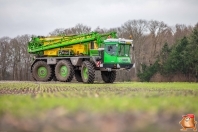
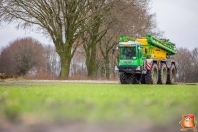
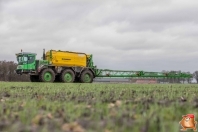
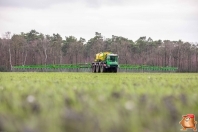
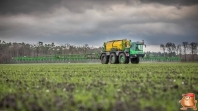
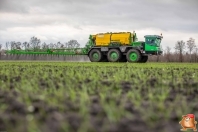

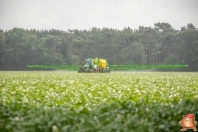
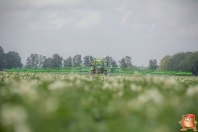
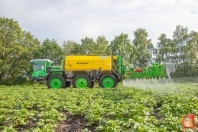
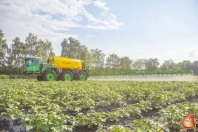
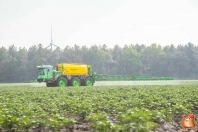
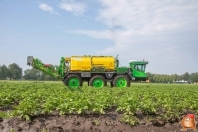
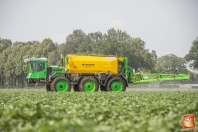
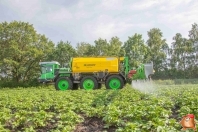
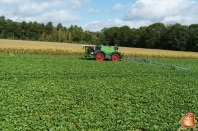
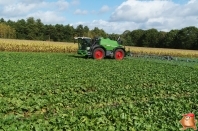
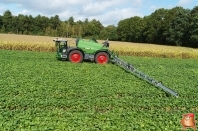
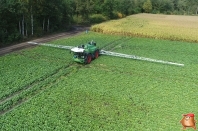
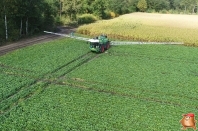
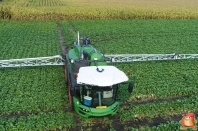
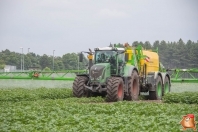
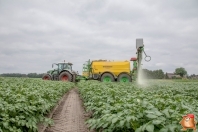
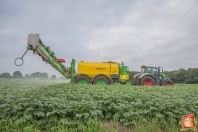
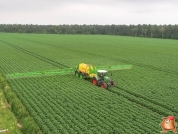
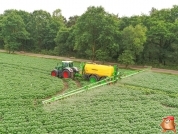
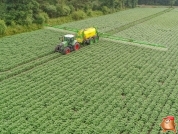
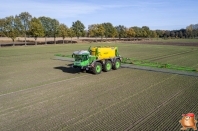
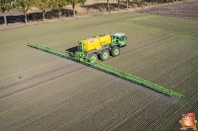
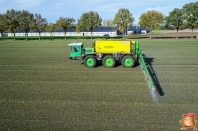
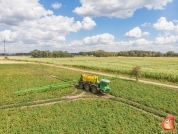
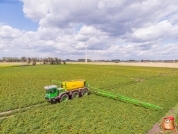
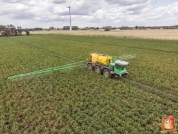
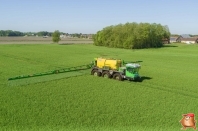
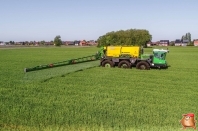
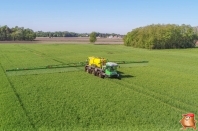
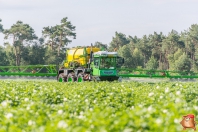
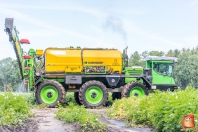
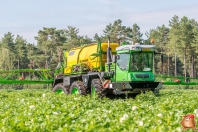
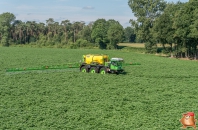
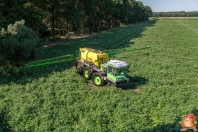
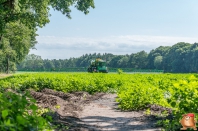
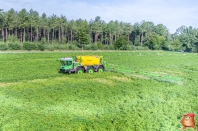
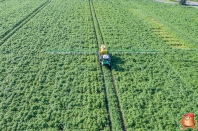
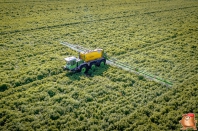
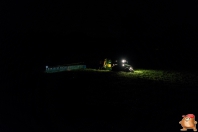
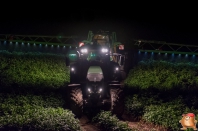
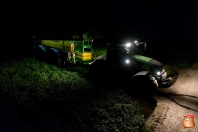
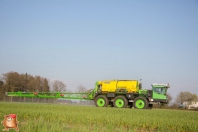
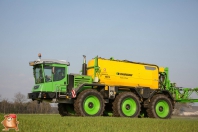
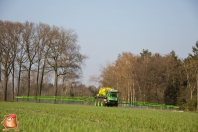
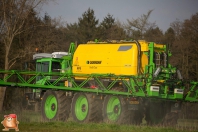
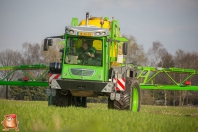
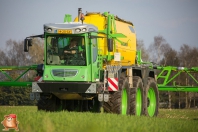
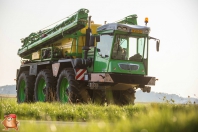
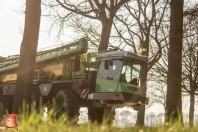
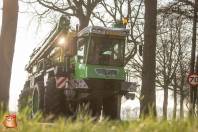
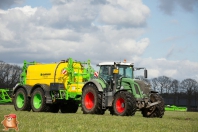
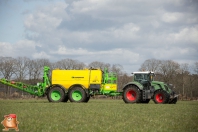
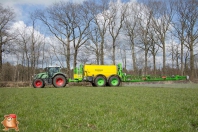
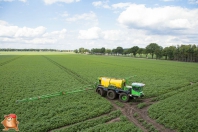
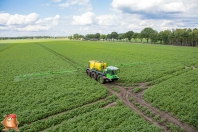
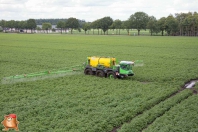
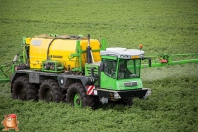
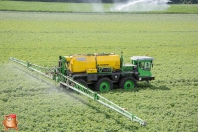
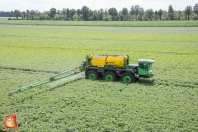
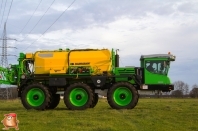
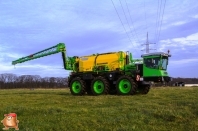
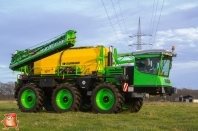
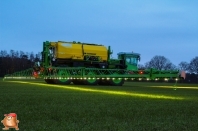
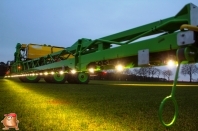
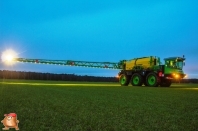
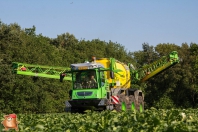
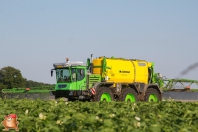
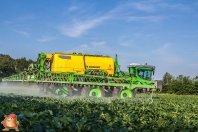
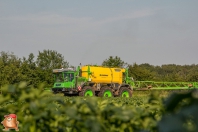
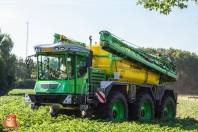
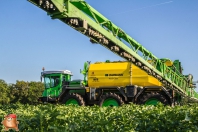
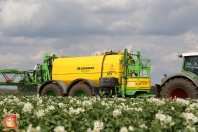
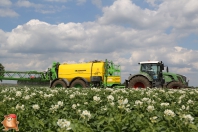
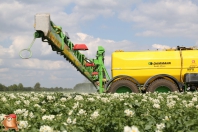
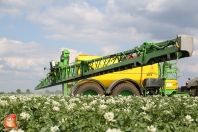
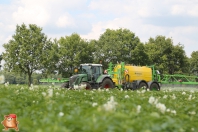
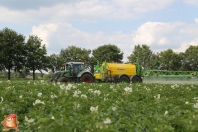
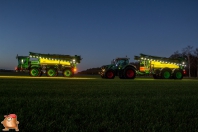
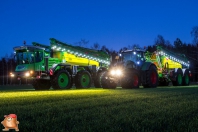
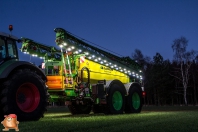
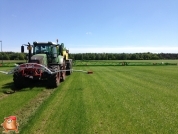
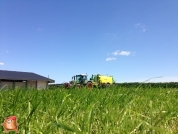
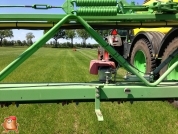
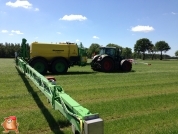
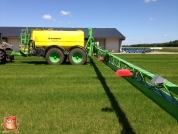
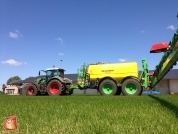
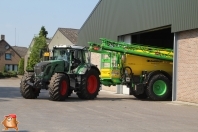
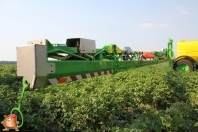
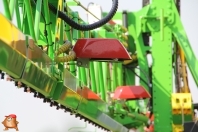
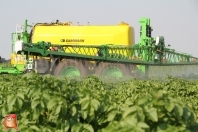
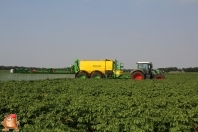
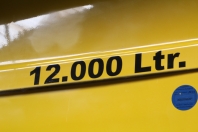
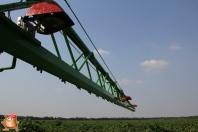
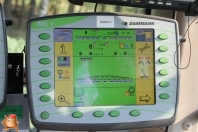
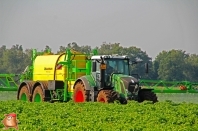
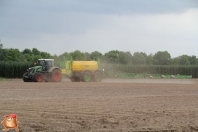
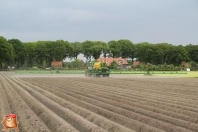
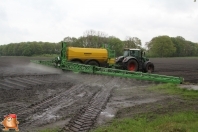
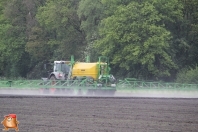
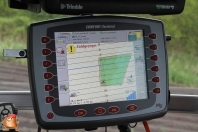
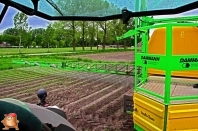
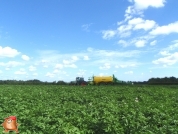
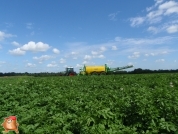
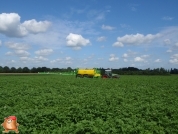
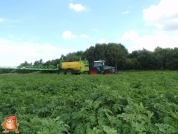
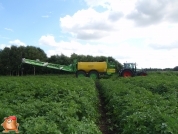
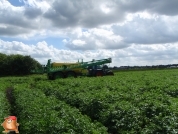
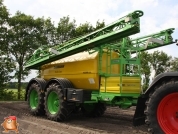
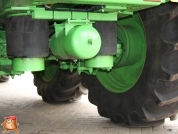
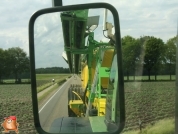
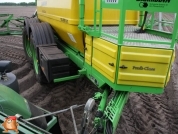
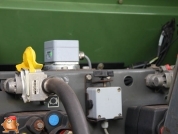
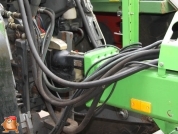
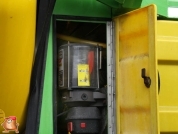
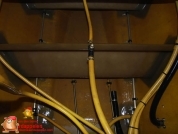
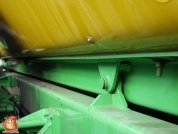
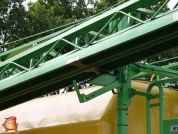
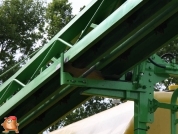
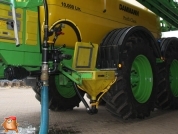
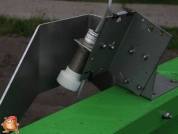
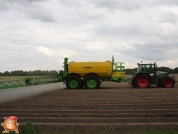
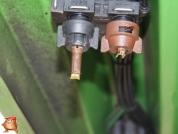
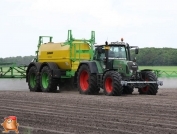
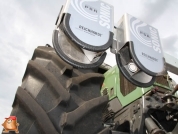
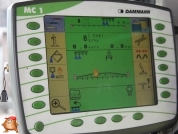
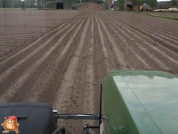
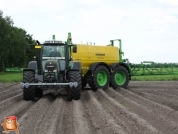
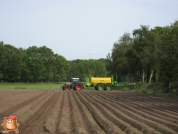
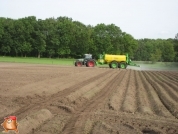
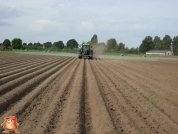
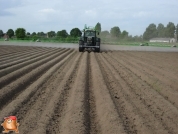
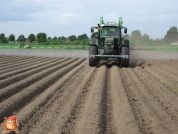
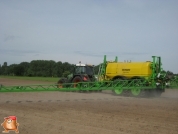
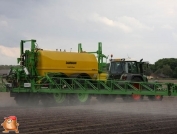
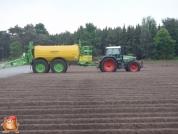
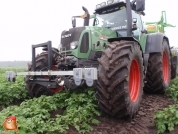
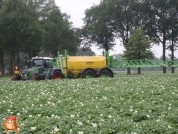
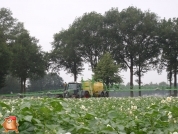
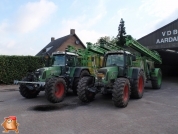
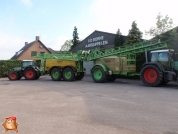
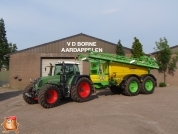
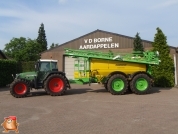
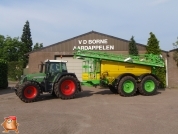
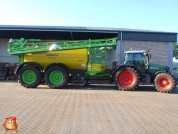
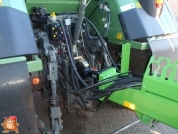
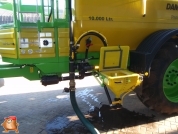
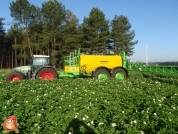
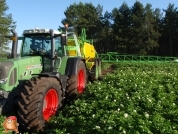
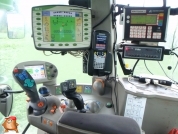
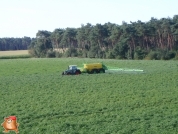
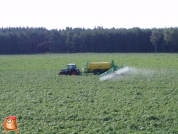
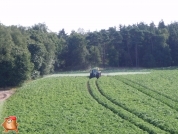
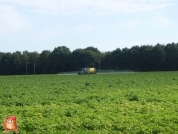
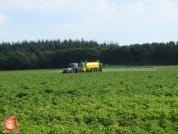
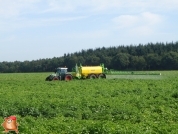
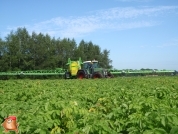
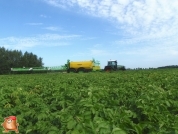
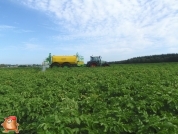
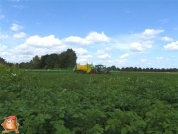
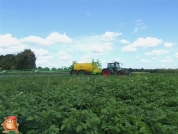
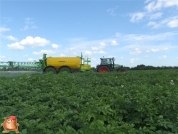
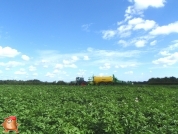
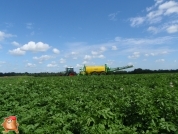
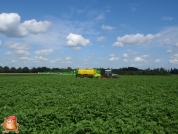
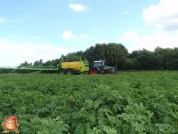
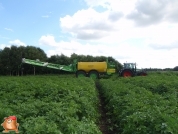
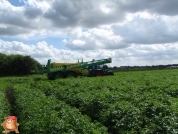
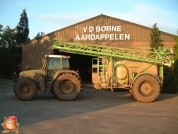
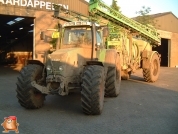
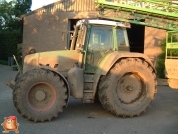
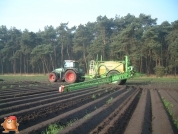
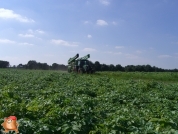
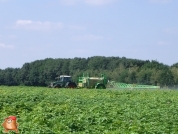
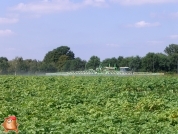
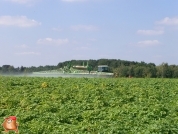
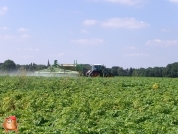
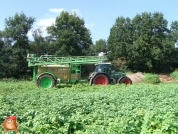
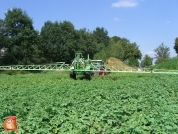
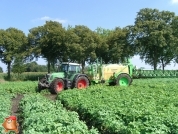
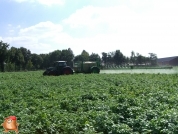
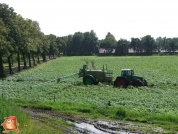
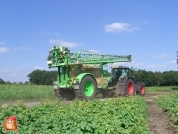
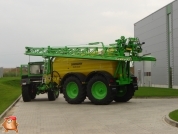
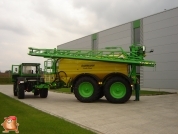
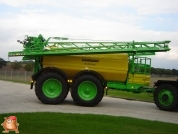
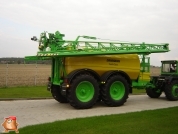
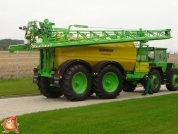
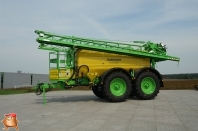
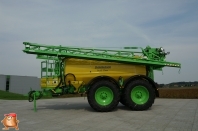
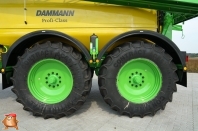
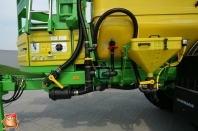
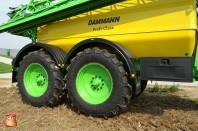
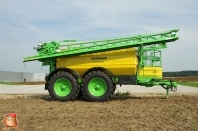
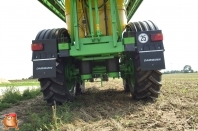
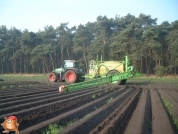
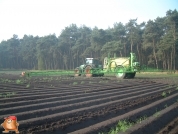
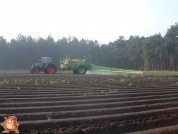
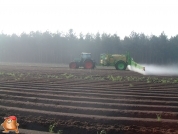
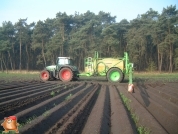
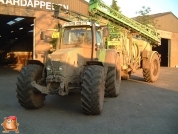
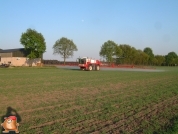
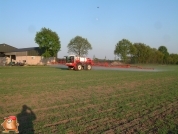
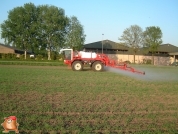
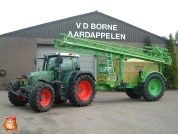
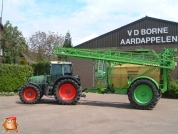
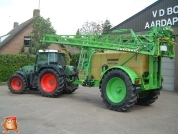
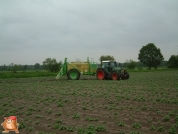
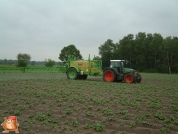
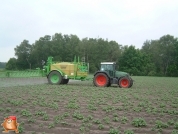
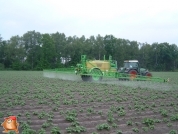
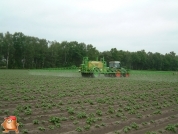
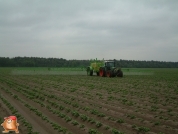
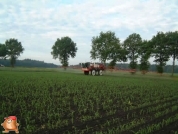
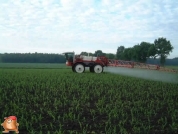
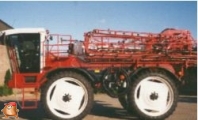
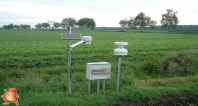
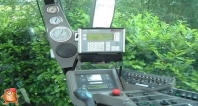
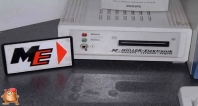


Social media
Bezoekers online: 15